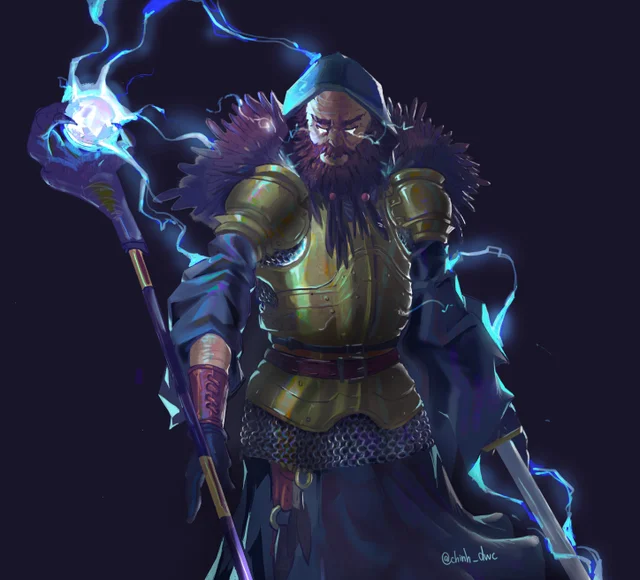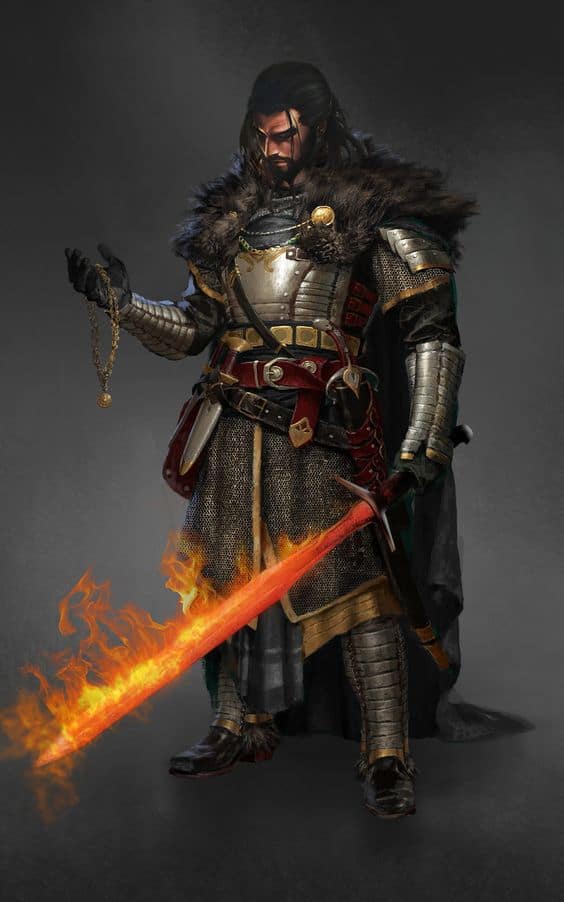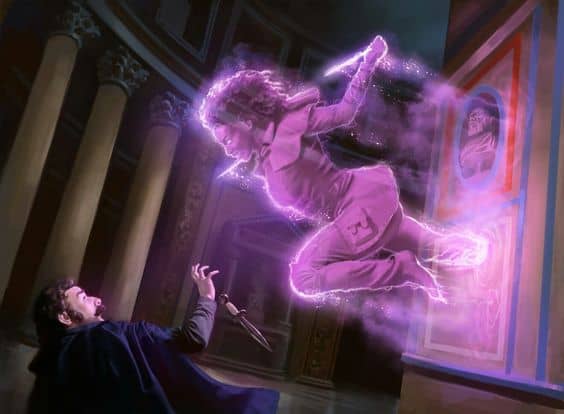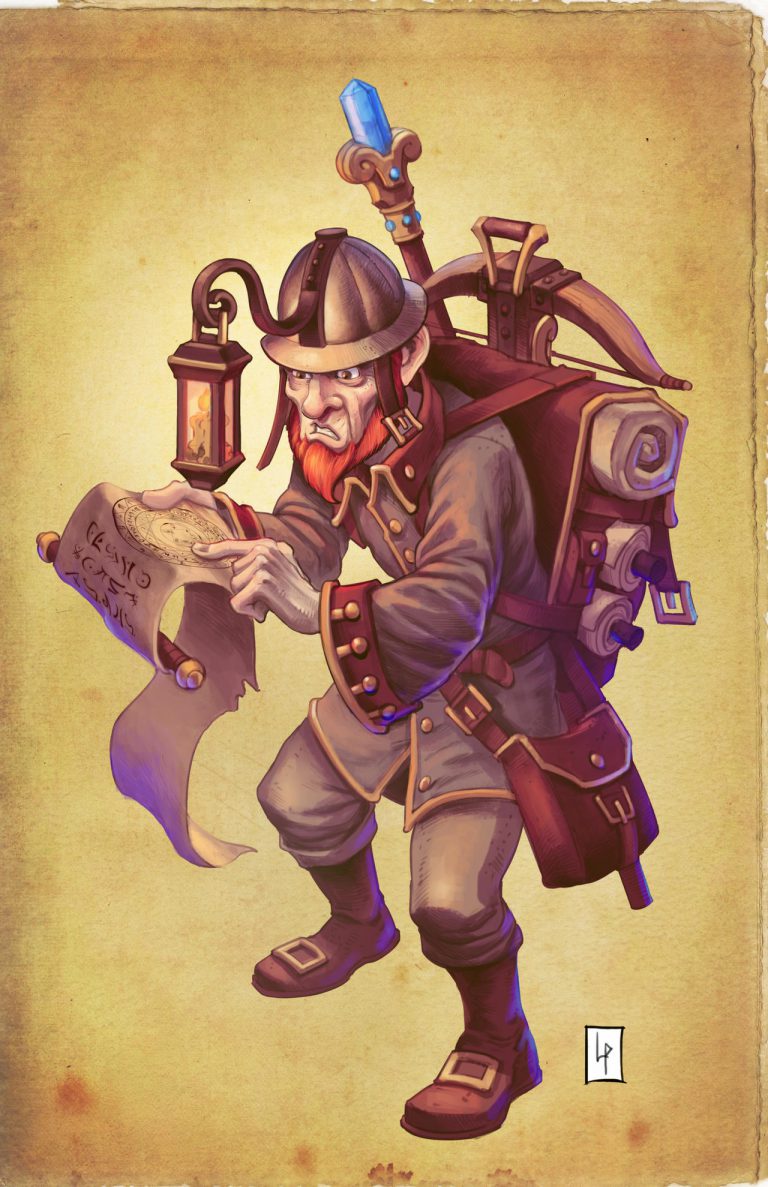D&D 5e: Arcane Trickster Rogue Guide
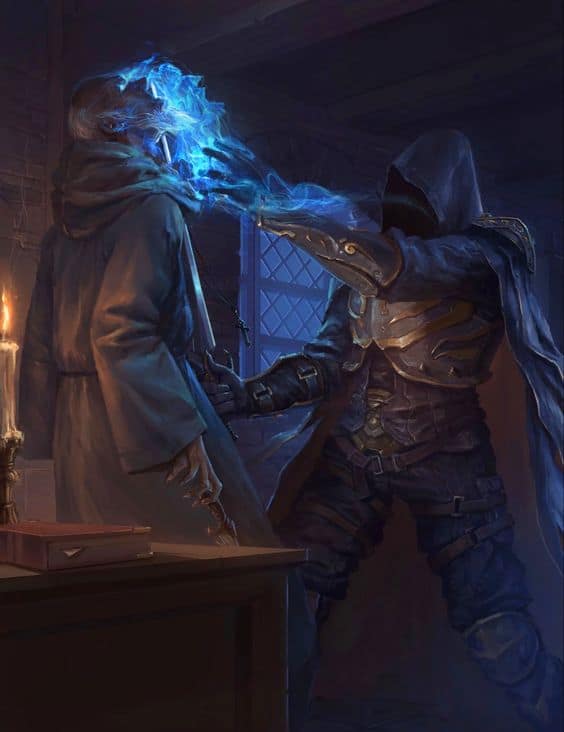
D&D 5e: Arcane Trickster Rogue Guide
Role in the Party
Two guards patrol the grounds of a noble house. As they walk past heavy oak doors the locks click, near-inaudible, the door swinging open just a hair as an unseen figure manipulates the mechanisms from far on the other side of the gardens, seeking the treasures held inside.
A day earlier, deep inside a dungeon, an orc frowns and turns as it hears a noise, only to stumble back with a crossbow bolt buried deep within its eye socket. The one who fired it slinks out of the shadows, a snake wrapped around their neck. Then, with a gesture and a single muttered word, disappear completely.
Arcane Tricksters are the perfect melding of magical might with conventional skill. Master thieves, assassins, spies, and superlative scouts, these Rogues are capable of dealing consistent, heavy DPS against single targets, interwoven with skills and spells to charm and disarm.
This guide goes into the Arcane Trickster subclass for the Rogue, the abilities of the subclass, feat and skill choices, multiclassing options, and more.
Epic
Good
Meh
Bad
The Arcane Trickster Rogue subclass is found in the Player’s Handbook. Click here to pick up your own copy of the Player’s Handbook!
Arcane Trickster Features
Spellcasting: From 3rd level, the Arcane Trickster has learned magical abilities, similar to a Wizard.
First, they learn three cantrips, Mage Hand, and two others from the Wizard spell list. Mage Hand is core to the class’s identity, (see below.) Good options for the other choices are utility cantrips like Minor Illusion or Prestidigitation.
Damage cantrips aren’t recommended, except for the close combat cantrips (Booming Blade and Green Flame Blade.) The Arcane Trickster has no way to apply sneak attack damage to their spell cantrips, so it’s normally best just to pack a bow or some knives.
The Arcane Trickster is a ⅓ caster, so has very limited spellcasting to support all of its Roguish abilities. Spells known are low, and most of the spell list is Enchantment or Illusion, though this doesn’t really limit the class too much as that contains much of what the subclass wants to do.
Choosing spells for the Arcane Trickster is more in-depth than this guide can go into. Look out for that guide in the coming weeks.
Mage Hand Legerdemain: Also from level 3, the Arcane Trickster’s Mage Hand cantrip is enhanced for Thievery and gains several bonuses:
-
You can control the hand using Cunning Action (a bonus action instead of an action)
-
The Mage Hand can be made invisible
-
You can stow or retrieve an object on another creature within 30ft
-
Thieves Tools can be used at a range on locks and traps
-
All of the above can be done in secret, using a Sleight of Hand check
This is what many people would call the core ability of the Arcane Trickster, and it’s an incredibly useful one.
Mage Hand is a staple cantrip as it is, and the ability to manipulate things at range, invisibly, offers so much utility and variance to the class that it’s ridiculous. Steal a key from under the guard’s noses. Plant incriminating evidence on an opposing noble. Trigger traps from a safe and comfortable 30ft distance. Wave a rat around in front of the bemused orc’s face. The options are limited by your imagination.
The ability also scales as the character levels up and gains more abilities, unlocking further ways to use this. It’s a fantastically roguish tool, and one you’ll quickly learn to love.
Magical Ambush: From 9th level, the Arcane Trickster’s ability to attack vulnerable enemies extends to their spellcasting.
If the Arcane Trickster is hidden from a target of their spells when cast, any saves are taken with Disadvantage.
This ability is incredible. The Rogue has a built-in way of hiding as a bonus action, in their Cunning Action ability, from as early as level 2!
Versatile Trickster: From 13th level, the Arcane Trickster can use their Mage Hand to distract targets just long enough to get an aimed shot in.
As a bonus action, the Arcane Trickster can give themselves full Advantage on attack rolls against a creature within 5ft of their Mage Hand.
At first glance, this ability sounds fantastic. Free advantage on a bonus action, right? Unfortunately, Mage Hand casts on an action, so realistically you’re burning a turn enabling the use of this.
Also, the Rogue has a built-in way to hide, and therefore gain Advantage, simply by hiding using Cunning Action. Which is also a bonus action.
This is nice to have, and very powerful when it’s set up correctly (especially if you have a way to make multiple attack rolls,) but is often more trouble than it’s worth.
Spell Thief: From 17th level, the Arcane Trickster’s skills have developed far enough that it can steal the spells out of a creature’s mind.
After being targeted by a spell (including being in the AOE of a spell) the Arcane Trickster can use their reaction to force the creature that cast that spell to make a save. The save uses the creature’s casting modifier as its bonus, against the Trickster’s Spell Save DC.
If the creature fails, the Arcane Trickster steals the knowledge of that spell from the creature’s mind, if it’s of a spell level that they’d be able to cast. They learn it for 8 hours, after which it’s gone.
But, more importantly, the caster failing the save means that the Arcane Trickster is immune to the effects of that spell.
It’s the second part of this ability that saves this. Realistically, anything that’s casting spells against you at level 17 isn’t going to be firing off 1st to 4th level spellcasts, so you’re unlikely to be stealing much of anything.
But spending a reaction to potentially outright ignore the effects of any spell that comes your way? That’s an incredibly potent defensive ability and one that simply cannot be understated or ignored.
Strengths
The first thing to know about the Arcane Trickster is that it’s still a Rogue, with access to all of the core Roguish abilities. That means consistent sneak attack damage, delivered to single targets using their choice of Dex-based weapons, generally one-handed swords, rapiers, or ranged attacks.
This is backed up with Cunning Action, which offers the Rogue mobility, freedom of movement, and the ability to hide, all on a bonus action.
Out of combat, all Rogues excel in the use of skills, having one of the widest ranging suites of any class, as well as access to the Expertise ability, meaning that Arcane Tricksters can be exceptional at any of the skill archetypes: Face, knowledge monkey, scout, survivalist, even impromptu crafter, with a little bit of work.
Taking the Arcane Trickster subclass adds spellcasting into this mix. While spells are never going to be the class’s main focus, they add a whole lot of flexibility that the character might not otherwise get. Infiltrating a castle, for example, is much simpler when you can turn invisible and unlock doors from a handy bush several steps away. Add in-combat abilities like Blur or Tasha’s Hideous Laughter to create a character that is a literal jack of all trades.
The Arcane Trickster also has a deck of powerful high-level abilities to draw from, including the ability to just switch on Advantage for its attacks against a single target, or force Disadvantage on their spell saves, both tied to their bonus action. The capstone is even better, and could potentially, with decent rolls, allow these Rogues to shrug off every spell that’s cast at them.
The only shame is that many of these abilities require the character to hit double digit levels before they become available, because they’re so effective, not to mention fun, that it would be nice to have them earlier.
Weaknesses
The biggest weakness of the Arcane Trickster is spell slots and spellcasting power. While it’s true that spellcasting is just a secondary focus of the character, the fact that it only has access to 1st level spells all the way up to level 7 is incredibly limiting.
This is compounded by limited spell choices as well as spell slots. By max level, the Arcane Trickster only knows 13 spells total, and only 4 of these can’t be from the Enchantment or Illusion schools.
This means that the Arcane Trickster is very limited in overall spell options, and needs to make sure that they pick spells that will be useful in multiple situations.
The Arcane Trickster also does nothing to address the vulnerability of the class, without burning spell slots on defensive spells. And, as we’ve just explained, taking defensive spells is going to limit other choices. Still, you should probably take something defensive in your build, because it’s easier to keep doing things when you’re not dead.
Best Race Options
Fairy: Small size, as well as a cantrip and two spells, Faerie Fire and Enlarge/Reduce, both of which can be cast with spell slots. The spells are good options and can be cast with intelligence, so they scale with the rest of your spellcasting.
Oh. And permanent, no resource needed flight that’s only limited by wearing light or no armor. Pick up a short bow and go win the game.
Bugbear: Darkvision, Stealth proficiency, an extra 5ft of range on melee attacks, and 2d6 bonus damage on the first round of combat if you gain surprise. The Arcane Trickster is one of the few Rogues that can self cast Invisibility, which can almost guarantee surprise. If you want a melee Trickster, Bugbears are excellent.
Lightfoot Halfling: The stats, Brave (Advantage against fear) and Lucky (rerolls all 1s) abilities of the Halfling are already excellent. But we really want the Naturally Stealthy ability.
Hiding behind allies is already handy, but it becomes straight ridiculous from level 9, where you can duck behind a friend, hide as a bonus action, then cast a spell on a target with Disadvantage because you were hidden. And even if your campaign doesn’t reach level 9, Halflings are still a great choice.
Choosing the Right Skills
The Arcane Trickster is a Rogue, which means that the class is essentially already the best at skills, without even having to try.
From level 1, the class will have at least 6 skill proficiencies available plus Thieves Tools, without almost no limit on what they can pick on the four granted by the class. Also from level 1, the Rogue gains Expertise in two skills, doubling their proficiency bonus. These things mean that the Arcane Trickster can choose to be good at literally any skill in the game.
Firstly, you should probably take Sleight of Hand. It plays into one of the class’s major features. Plus, it’s just fun to have.
Stealth is always a good choice, especially if you’re planning on any type of scouting or subterfuge. Perception is exceptional, and a great option for Expertise.
The Arcane Trickster normally has more Intelligence than other Rogues, which means that they’re uniquely suited towards Knowledge skills, especially Arcana, which fits perfectly in thematics and use.
With any remaining skill slots, feel free to choose any skill that fits your character. Rogues can be good at every skill, and if your party lacks something, you can take it and fill that gap.
Fitting Feats
Sharpshooter: The Arcane Trickster leans towards ranged attacking, where it can freely pick its targets as well as cast spells for maximum effect.
If you’re a ranged attacker, the Sharpshooter feat is almost essential. Ignoring long range penalties allows the Rogue to land sneak attacks at double the distance, ignoring cover is incredible, and the ability to simply switch on a +10 damage buff for a penalty to hit doubles DPS at low levels.
Inspiring Leader: Many Arcane Tricksters will have some spare Charisma rolling around, and every Rogue has a significant lack of effective HP.
The Inspiring Leader feat offers a fix for this, giving you and up to 5 friends a scaling barrier of temporary HPs at the start of the day. Even better, it can be refreshed after every rest, as long as you have a spare 10 minutes. Utility and defense are everything this class wants from a feat. Take it.
Fey Touched: Misty Step is an excellent defensive spell, and the ability to pick up another option from a relatively wide list adds a lot of utility to the subclass, especially since it can be cast with normal spell slots.
Bless is a stand out pick, offering wide ranging bonuses to multiple party members, and if you position correctly, losing concentration should never be a problem.
Optimal Backgrounds
Courtier: Two perfect social skills and two languages let the character fulfill their dream of talking to kings and queens the world over. Then stealing all the crown jewels.
Spy: This variant of the criminal feels a little more Arcane Trickster, as well as offering two perfectly Roguish skills, a gaming set, and Thieves Tools (that can be swapped out for any other tool kit!)
Folk Hero: Outdoorsy skills might not be the best, but this background offers Land Vehicles and Artisan’s Tools, a combination that’s hard to get anywhere else.
Multiclassing Options
Undead Warlock: More spellcasting and spell slots that refresh on a short rest, a fantastic spell list, including the best damage cantrip in the game, and a bonus action transformation that gives temporary HP, and adds a save or Frightened ability to your attacks.
There are two ways to build this character. The first is one or two levels to pick up some bonus spellcasting and the Form of Dread ability, plus some variation in spell choices.
The second would be a heavier investment into Warlock, especially after Arcane Trickster 9 and Magical Ambush, which also works on Warlock spells. From here, you’d pick up a Pact Boon (pro tip, an invisible, smart familiar is a fantastic thieves buddy) as well as far more spellcasting power.
Armorer Artificer: Intelligence based spellcasting that stacks with your existing spells, the ability to make your own magic items, and a ton of combat related proficiencies spin the character into a much stronger fighting machine.
Armorer in particular gives you a set of magitek armor that offers one of two models. Tanky heavy armor, which is better with more Armorer levels, and a lighter stealth model, which is where we’d lean. Because Advantage on all of your Stealth checks, as well as a built-in lightning gun that delivers sneak attack damage at range is just good.
Bladesinger Wizard: The Bladesinger augments both of the things the Arcane Trickster needs to be good at. Magic, and stabbing things.
Wizard spellcasting is a major supplement to the class, with the widest spell list in the game, ritual casting, and all the benefits of a spell book.
Taking Bladesinger, in particular, offers an in-combat buff that boosts AC, movement speed, and a few other buffs, all of which benefit from a close-in, one handed fighting style.
In truth, any of the Wizard Colleges offer a ton of power. Other standouts include Divination for probability manipulation, Chronurgy for something similar as well as an initiative boost, and War Magic for toughness.
Would I recommend playing an Arcane Trickster Rogue?
The Arcane Trickster is another classic class from the halcyon days of old time D&D, and it’s good to know that the designers did the class justice when they brought it forward into 5th.
The only ceiling to the class is the fact that it has limited spellcasting, and the fact that most of its really powerful abilities come when it hits double digit levels.
But either way, the Arcane Tricker is a fantastic subclass, it’s flexible, and powerful, taking what the Rogue already did, then making it better at almost everything. If you’ve never played one, it comes highly recommended.




